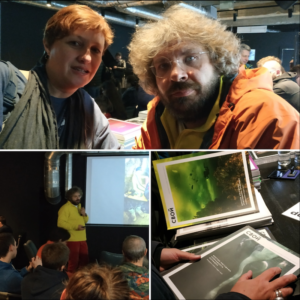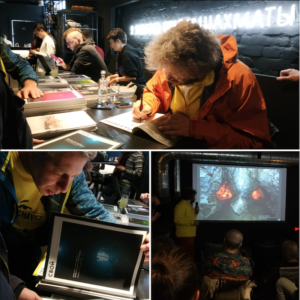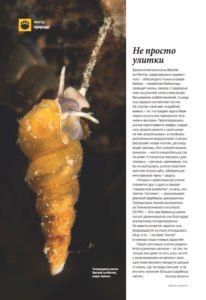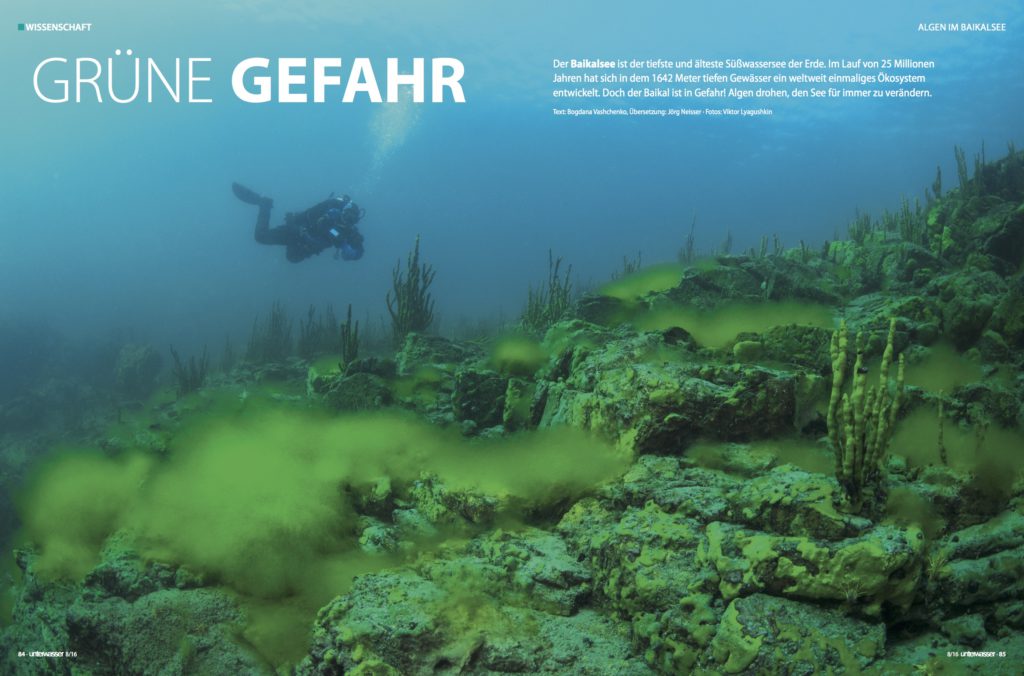 My piece in National Geographic (Россия) Magazine (Nov 2015) dedicated to ecological situation in Baikal Lake.
My piece in National Geographic (Россия) Magazine (Nov 2015) dedicated to ecological situation in Baikal Lake.
In the autumn of 2013 near the town of Severobaikalsk storms washed ashore about a half thousand tons of tangled thread-like algae; the green mass laid rotting on the shore and spreading an unpleasant smell. Accumulations of stinking slime appeared near other settlements around Baikal. Local people were worried. Then jittery news began to appear, that the Spirogyra – so the name of alien had been heard for the very first time – kills Baikal.
In 2015 Baikal Limnological Institute announced the situation was caused by anthropological influence and urgent measures are needed.
The Lake is on the edge of ecological catastrophe. We did media coverage of the development of the situation; the results are published in the different magazines and documentary at My Planet Channel. Are Russian authorities going to change the situation? We have a hope that pressure of public (both Russian and International) opinion would have influence. The PHOTOTEAM.PRO is going to come back and complete the reportage about threat of death of the biggest fresh water reservoir of our planet and its unique biological ecosystem.
UPD: The article online is here













